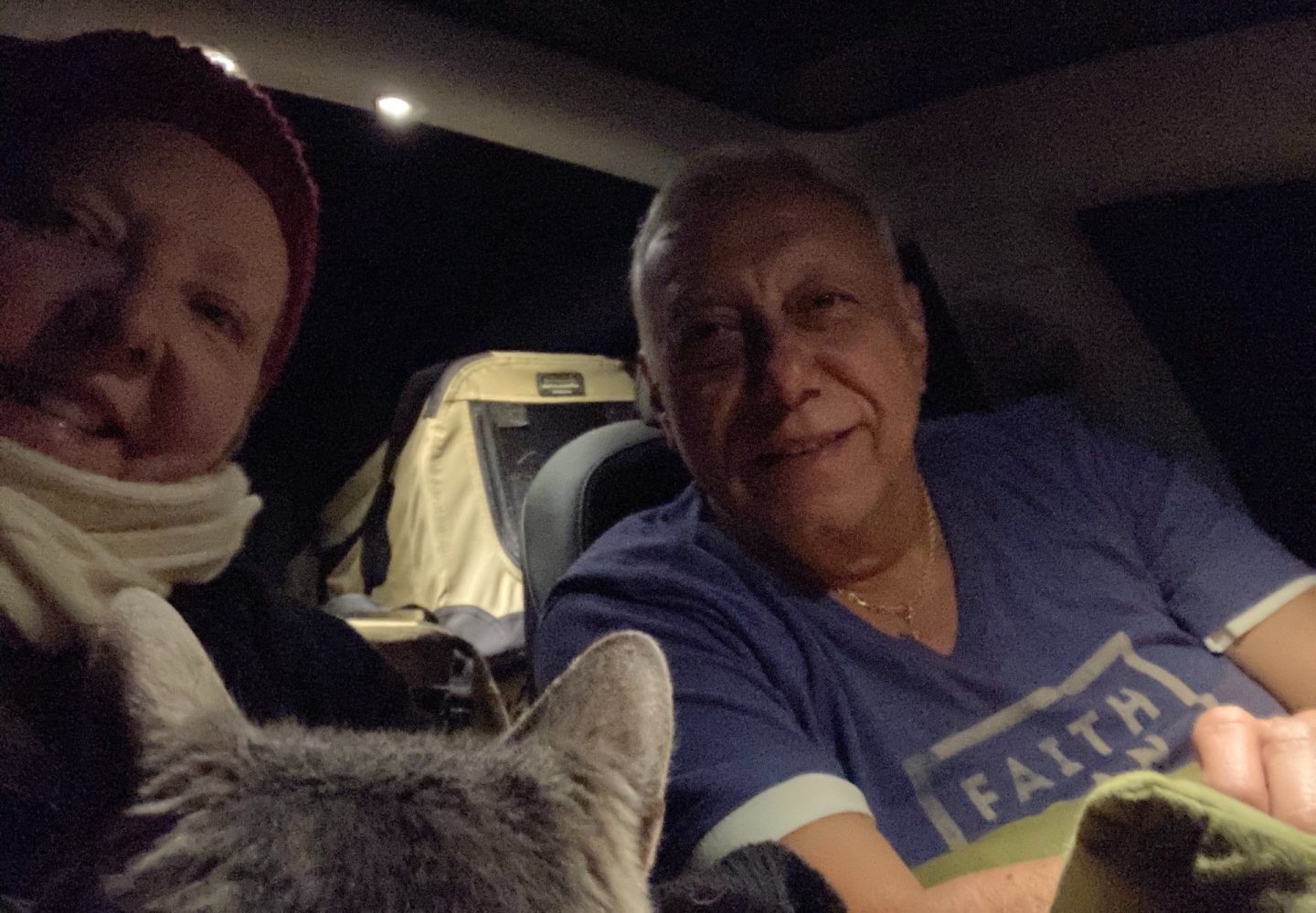
Electrek‘s Michelle Lewis spoke with three electric car owners in Texas. They each explained how their EVs helped them get through February’s deep freeze and rolling blackouts.
How 3 Texas EV owners coped
Stephen Slawek of Austin said:
I had charged my LeafPlus to 80% the day before the storm hit and power went off. We used the car’s heater intermittently to get warmed up. It really helped. We used 30% of the charge for this purpose. Roads were too iced over to drive.
Pete Holguin of San Antonio, who owns a Tesla Model 3, said:
The Tesla was responsible for possibly saving my wife Donna and me. I had charged the EV to 90% right before the storm hit. When the temperature inside the house dipped below 50F, my wife and I put our six cats in their carriers and stacked them in the back seat of the EV in the garage. We have six rescue cats ranging in age from 3 to 16 years old.
The temperature in the garage was 33F. We ran the heater for eight hours in Camp mode one night and we were able to sleep in comfort at 69 degrees. We only used 17% of the battery charge for those eight hours. We did this for three nights on one charge. We were able to keep our phones charged which allowed us to keep in contact with our families. Thank God for the Tesla.
William Garzon of Austin said:
I have a Tesla Model X SUV with air suspension and my wife has a Tesla Model 3. I started looking at the news that it was going to be record freezing conditions so I charged up both cars to 90%.
If we turned our cars’ heaters on, we could use them in the garage to sleep in them – it never got below 45F in there. We had intermittent power outages – it’d go out for 10 hours and then on for four hours and then off again for 10 hours.
Luckily we didn’t have to sleep in the cars, we slept in the living room and set up a camping tent with our young daughter, and the cars were a backup.
I have a 250W power inverter. We charged our rechargeable batteries off the inverter that was charged by the cars. We used the batteries for power packs and phones. When the power came on, we’d scramble to make hot food.
I set the Tesla Model X to super-high air suspension and was able to drive in the snow to check on my mom, no problem.
There were big discussions on Nextdoor about where to find gas for cars, and we didn’t have to worry about that.
E-bicycle batteries provided emergency power
It wasn’t only electric cars that were helping Texans stay charged up – electric bicycles helped as well.
Many e-bikes have USB charging ports either built in to their batteries directly or located on the handlebars. These USB ports are designed to keep phones charged while on the go and can be helpful when using phone-based GPS navigation while riding an e-bike. In addition to their typical use, storm-affected Texans also discovered that they worked equally well as emergency backup power for USB devices when the grid failed.
As CEO of Rad Power Bikes explained to Electrek:
A lot of customers have texted, emailed or otherwise contacted our customer support to let us know that they were able to use their e-bike batteries to charge their phones during the extended power outages. And we just thought that was another awesome example about how e-bikes were coming to the rescue – not just for health and wellness – but also to help when electric grids fail after not being designed to handle the kind of climate instability we’re seeing.
A typical 600-700Wh battery like those found on the e-bikes from Rad Power Bikes can provide several dozens of phone charges. That could theoretically keep a phone charged for weeks during an extended emergency.

How Texas EV drivers fared overall
El Segundo, California-based electric vehicle infrastructure company PlugShare conducted a survey last week among 580 EV drivers in Texas. (PlugShare operates a 72,000-member EV driver survey research panel, PlugInsights.)
Even though 72% of the 580 drivers polled say they had experienced at least one power blackout at home between February 10 and February 22, less than 6% said they were unable to drive their electric car at some point because a blackout made it impossible.
According to PlugShare, three of the reasons given for minimal impact were:
- Not all of the outages lasted long enough to prevent charging. 55% of EV drivers who experienced an outage were never without power for longer than a day and could easily plug in when the grid came back up.
- Many drivers charged their batteries in anticipation of possible blackouts. In the run-up to the storm, authorities warned residents of potential blackouts and many reported that they “topped off’ their batteries to be safe – and the folks we spoke to confirmed that.
- 6.5% of EV drivers who experienced an outage had a battery energy storage system installed at their homes. These systems, like Tesla’s Powerwall, made it possible to charge an EV even when the grid had completely shut down. One EV owner told PlugShare: ”We experienced 42 grid outages for a total of 39 hours. We charged 2 EVs without difficulty and had no home power loss due to solar panels and battery back-ups.”
FTC: We use income earning auto affiliate links. More.





Comments